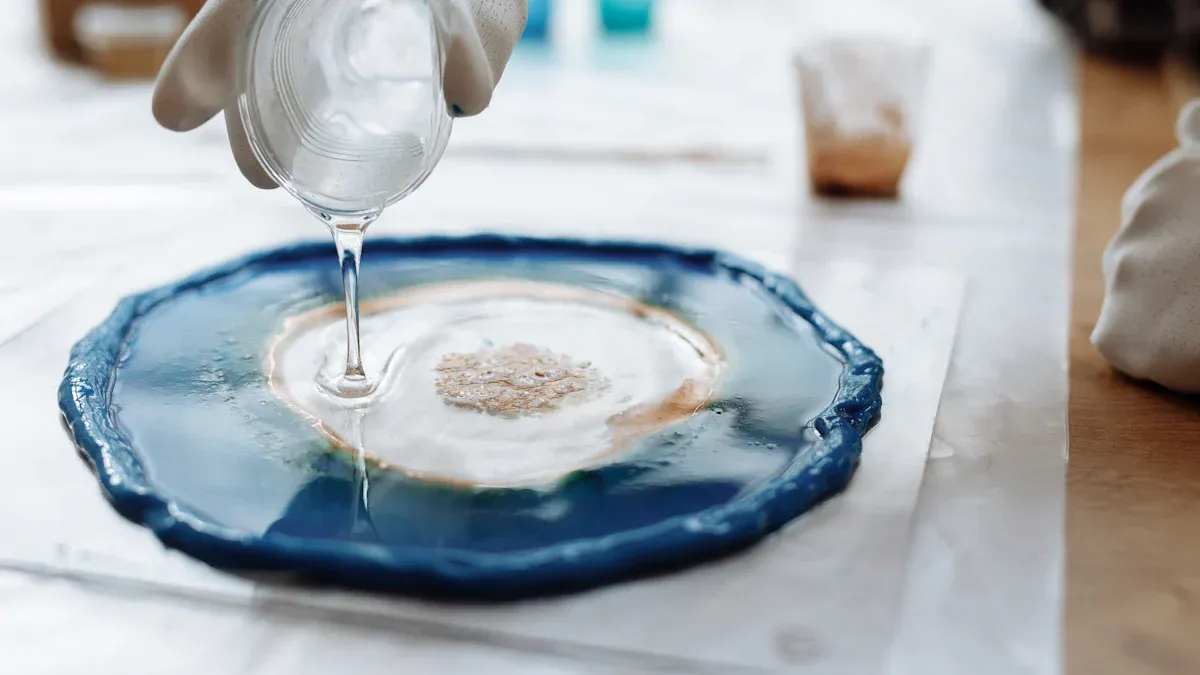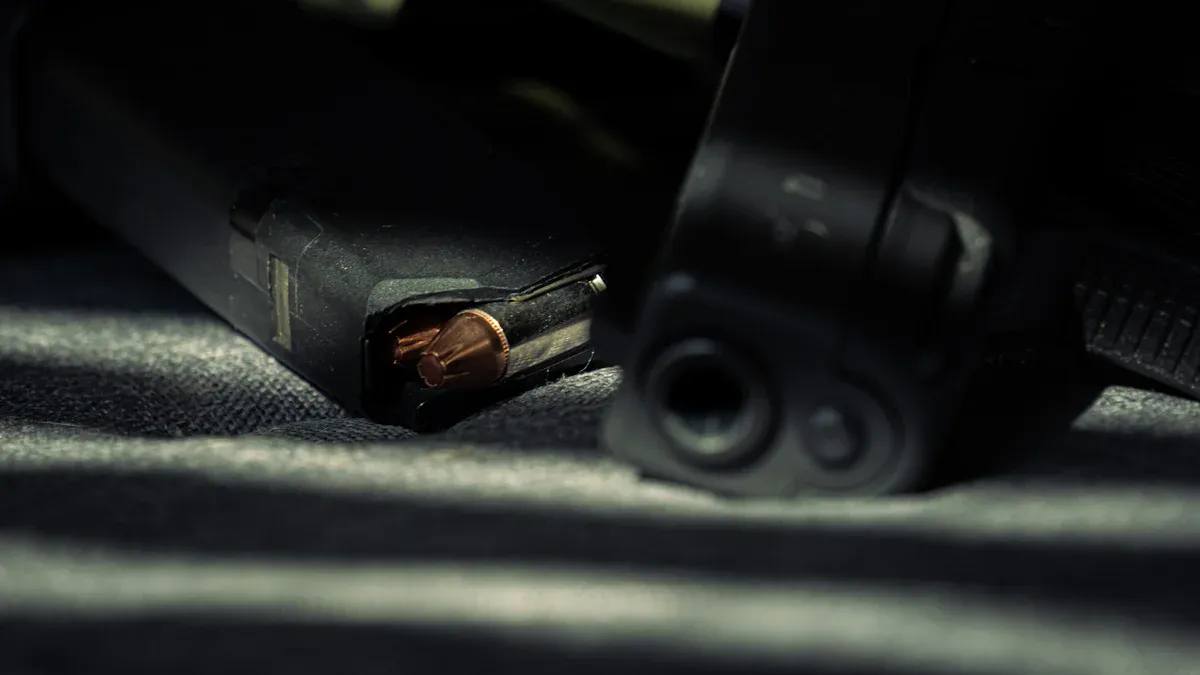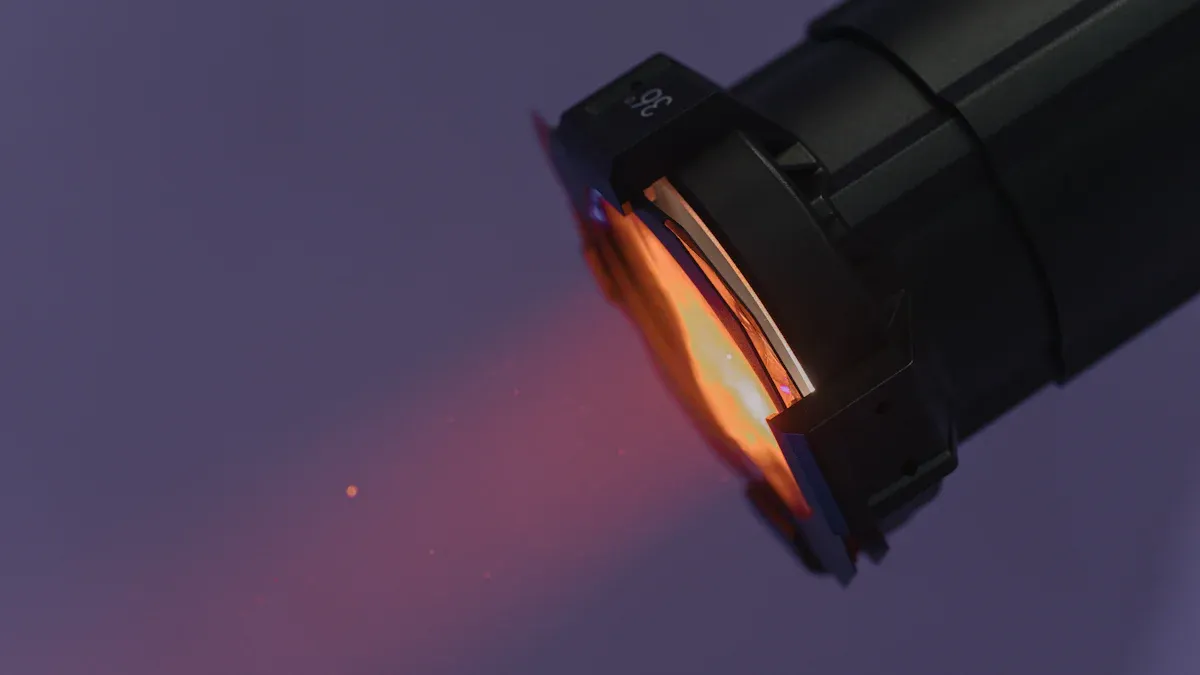How to Seal Your Helius Flashlight to Prevent Water Damage

Protecting your Helius flashlight from water damage ensures it performs reliably in wet conditions. A sealed flashlight offers several benefits: it resists corrosion, maintains brightness during storms, and withstands mud or humidity. Waterproof models meet rigorous standards like IP ratings, guaranteeing durability. With the right tips and tools, sealing becomes a simple yet essential task.
Key Takeaways
Check O-rings and seals often for damage. Replace broken ones to keep it waterproof.
Use silicone grease on O-rings and threads when checking. This helps seal better and makes your flashlight last longer.
Keep your flashlight in a cool, dry spot. Storing it right protects the seals and works well in wet places.
Anatomy of the Helius Flashlight
Key components for waterproofing
Your Helius flashlight relies on several critical components to achieve a watertight seal. Rubber gaskets and O-rings play a vital role by creating a barrier that prevents water from entering the internal compartments. These components, when paired with a specialized waterproof lubricant, enhance the sealing capabilities and protect against moisture and dust. The flashlight’s body, often made from anodized aluminum, resists corrosion and adds durability. Together, these elements ensure your flashlight remains reliable even in challenging conditions.
Common water entry points
Understanding where water might seep into your flashlight helps you address potential vulnerabilities. The most common entry points include the seams where the head and tail cap connect to the body. The lens area and battery compartment are also susceptible to leaks if the seals are damaged or improperly installed. Even a small gap in these areas can compromise the watertight seal, leading to internal damage. Identifying these weak spots allows you to take proactive measures to prevent water ingress.
Inspecting parts before sealing
Before sealing your Helius flashlight, inspect its components thoroughly. Check the O-rings and gaskets for signs of wear, such as cracks or deformation. Ensure the threads on the flashlight’s body are clean and free of debris. A quick wipe with a soft cloth can remove dirt that might interfere with the seal. If you notice any damaged parts, replace them immediately to maintain the flashlight’s waterproof integrity. Regular inspections not only extend the life of your flashlight but also ensure it performs optimally in wet environments.
Tools and Materials for Sealing

Essential tools and materials
To seal your Helius flashlight effectively, you need a few essential tools and materials. Start with a set of replacement O-rings, as these are critical for maintaining a watertight seal. Silicone grease is another must-have item. It lubricates the O-rings and enhances their sealing capability. A soft cloth or microfiber towel is useful for cleaning the flashlight's threads and surfaces before sealing. Additionally, a small brush or toothpick can help you apply grease precisely to the O-rings and threads. These basic tools ensure you can prepare and seal your flashlight with ease.
Importance of quality and compatibility
The quality and compatibility of your tools and materials directly impact the waterproofing process. Low-quality materials can lead to issues like peeling or delamination, which compromise the seal. Incompatible materials may chemically react, degrading the waterproof barrier. For example, using the wrong type of grease can damage O-rings over time. Always choose high-quality materials, such as silicone or viton O-rings, which offer superior sealing capabilities. Following manufacturer recommendations ensures that all components work together seamlessly, reducing the risk of water damage and costly repairs.
Optional tools for enhanced waterproofing
For added protection, consider investing in optional tools. Applying silicone sealant around the rear switch boot can provide extra defense against water ingress. Adding a second O-ring to critical areas enhances the seal, especially in high-pressure environments. Silicone grease, when applied generously to threads, further improves waterproofing. You can also experiment with thicker or higher-grade O-rings for better durability. While these tools may not be necessary for everyday use, they are worth considering if you frequently expose your flashlight to extreme conditions.
Sealing Your Helius Flashlight

Cleaning and preparing the flashlight
Proper preparation is essential for achieving a watertight seal on your Helius flashlight. Follow these steps to clean and prepare it effectively:
Clean the lens carefully using a soft, non-abrasive cloth to avoid scratches.
Inspect the battery compartment for any signs of corrosion or debris.
Disassemble the flashlight and clean all surfaces with a mild cleaning solution to remove dirt and grime.
Allow all parts to air dry completely before proceeding.
Reassemble the flashlight temporarily to test its functionality.
Taking these steps ensures that the flashlight is free of contaminants that could compromise the seal.
Replacing worn-out o-rings
O-rings are critical for maintaining a watertight seal. Inspect them for cracks, deformation, or wear. Replace any damaged O-rings with high-quality silicone or viton alternatives. Position the new O-rings snugly in their designated grooves without stretching them. This step prevents water from seeping into vulnerable areas like the battery compartment or lens.
Applying silicone grease
Silicone grease enhances the sealing capability of O-rings and threads. Apply a thin, even layer of grease around the O-rings and flashlight threads. Use a small brush or toothpick for precise application. For superior waterproofing, consider using RTV silicone, which provides better water resistance and dust protection than standard grease. Avoid over-applying, as excess grease can attract dirt and reduce effectiveness.
Reassembling and tightening components
Reassemble the flashlight carefully to ensure all components fit securely. Tighten the head, tail cap, and other threaded parts firmly but avoid overtightening, which can damage the O-rings. Conduct a water resistance test by submerging the flashlight in a shallow container of water. Monitor for any signs of leaks. If water ingress occurs, adjust or replace the O-rings and repeat the test.
Testing for water resistance
Perform a final water resistance test to confirm the effectiveness of your sealing efforts. Submerge the flashlight in water for a brief period and check for moisture inside. Alternatively, simulate rain by spraying water over the flashlight. Ensure all seals remain intact and functional. Repeat the test until consistent water resistance is achieved. Regular testing helps maintain the reliability of your waterproof flashlight.
Maintenance for Long-Term Waterproofing
Inspecting o-rings and seals regularly
Regular inspections are essential to maintain your flashlight's watertight seal. O-rings and seals are the first line of defense against water ingress, so you should check them frequently for wear and tear. If you use your flashlight daily, inspect these components at least once a month. For less frequent use, a thorough inspection every six months is sufficient. Look for cracks, deformation, or any signs of damage. Worn-out O-rings are a common cause of waterproofing complaints, but replacing them promptly ensures your flashlight remains reliable. By staying proactive, you can prevent water from compromising the internal components.
Reapplying silicone grease
Silicone grease plays a vital role in flashlight maintenance by enhancing the effectiveness of the watertight seal. Over time, grease can wear off, reducing its ability to protect against water and dust. Reapply a thin layer of silicone grease to the O-rings and threads during each inspection. This step not only improves waterproofing but also extends the lifespan of the seals. Use a small brush for precise application and avoid over-greasing, as excess grease can attract dirt. Consistent reapplication ensures your flashlight stays ready for any wet or dusty environment.
Proper storage to protect the seal
Proper storage is another critical aspect of flashlight maintenance. Follow these tips to protect the watertight seal and extend the life of your flashlight:
Store your flashlight in a cool, dry place to avoid damage from extreme temperatures.
Keep it dry, even if it is waterproof, to prevent moisture from affecting the internal circuitry.
Use a protective case to shield the flashlight from physical damage and dust.
These practices safeguard the seals and ensure your flashlight remains in optimal condition. A well-maintained flashlight is always ready to perform when you need it most.
Sealing your Helius flashlight protects it from water damage, ensuring reliable performance in wet conditions. Regularly inspect O-rings, clean seals, and store the flashlight in a dry place. Reassemble components carefully to maintain integrity. These steps extend its lifespan, keeping it ready for any challenge. Prioritize maintenance for long-term durability.
FAQ
How often should you inspect the O-rings on your Helius flashlight?
Inspect the O-rings every month if you use the flashlight frequently. For occasional use, check them every six months to ensure they remain intact.
Can you use any type of grease for sealing the flashlight?
No, only use silicone grease. Other types can degrade the O-rings or compromise the seal, leading to water damage.
Tip: Always choose high-quality silicone grease recommended by the manufacturer for optimal waterproofing.
What should you do if water enters your flashlight?
Disassemble it immediately. Dry all components thoroughly. Replace damaged O-rings or seals before reassembling to restore its waterproof integrity.
See Also
In-Depth Review of the Heliusworld Flashlight Model
Explore Your Adventures With the Helius Tactical Flashlight
Uncover the Helius Lantern Flashlight With 200-Hour Battery Life
